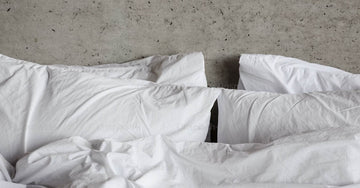Bulking, Cutting, or Neither? How to Eat for Your Goals

Steve Cook is arguably one of the most idolized physique competitors and models in today’s fitness community, with 2 million Instagram followers. He’s admirably shredded, and one would assume he utilizes the standard tricks to stay in peak shape – bulk, cut, bulk, cut. But in a 2016 GQ profile, he shocked his fans with a startling confession. “For a long time, bodybuilders have been known to bulk and cut and bulk and cut, and you add mass, then reduce a lot by the time you get on stage. I don’t, though,” he said. “I try to stay photoshoot-ready year-round and to always have a six-pack.” What?! He went on to share that he slowly increases calories to pack on lean mass. (And even more shocking, some of those calories come from Chipotle!) So, if one of the most notable figures in fitness doesn’t abide by the bulk-cut nutritional approach, should you abandon it too?
Bulking
Among fitness devotees, both professional and amateur, it’s assumed that you have to bulk to gain muscle. During a bulking period, you significantly increase your daily caloric intake – upwards of 10-20% more than your maintenance calories (i.e. what you’d need to eat to maintain your current size). The calorie surplus fuels heavier lifts and helps you pack on pounds quickly. However, it’s difficult to do this without gaining fat. For starters, whatever fuel your body doesn’t use gets stored as fat for later (usually as a protective coating over your abs). And a lot of guys tend to eat calorie-rich foods, like burgers and fries, to hit their higher intake goals. The more low-quality foods you eat, the more it shows in your physique.

Cutting
Because of the inevitable fat gain, a bulking period must be followed by a cutting period. During a cutting period, you slash your caloric intake – typically 5-15% below your maintenance calories. This phase typically favors lean proteins and veggies while significantly reducing carbs. The drastic switch melts off fat, giving you a chance to show off all the muscle you packed on during the bulk. However, if your caloric deficit is too steep, you risk burning some of your muscle too. Worst case scenario, you could lose some or all of your gains during your cut.
An Alternative
Steve Cook prefers to sneak in more calories little by little as opposed to more aggressive cycles of bulking and cutting. If you check out his Instagram posts (or his many magazine covers), you can see proof that his plan works.
A 2015 study published in the European Journal of Applied Physiology showed that bodybuilders reduced their body fat percentage, in turn gaining a more muscular appearance, while consuming maintenance calories. They didn’t need to bulk or cut to get ripped – they just needed to optimize their protein consumption and their training.
The study results suggested that bulking should be limited to no more than an extra 500-800 calories per day, and the bulk shouldn’t last longer than 45 days. This is the ideal way to gain lean muscle while minimizing fat gain. The short length of the bulk and the lower calorie surplus both go against common knowledge – that you should spend a season overeating and that you should pound down every burger and taco in sight.
Ultimately, when it comes to bulking and cutting, an effective plan is to avoid them both. A slow and controlled approach could be the path to your dream physique.




